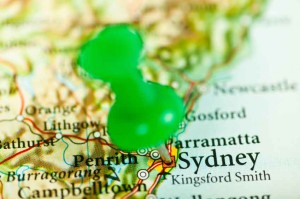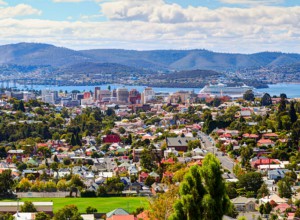The number of properties selling within a given year account for a very small portion of the overall market with the trend even lower over recent years; over the 12 months to July 2018, 4.6 per cent of national dwellings transacted, down from 5.3 per cent a year ago.
The more pronounced decline in turnover rates over the year to July is hardly a surprise given current market conditions, with dwelling values softening each month now for the past 12 months; coupled with the lowest levels of new stock being added to the market seen since 2012 over the past 6 months, as confidence wanes and homes take longer to sell.
However, the longterm trend can be attributable to a variety of factors and will differ between each of the regions.
Based on the findings, it’s likely that housing affordability has delivered a large impact on the broader downward trend in turnover ratesa and where the likes of Sydney and Melbourne would have weighed heavily given the high growth seen across these larger markets relative to only mild growth in household incomes.
Fifteen years ago the dwelling price to income ratio as a national figure showed that dwelling prices were 5.1 times as high as the gross household income, while recent data shows this has increased to 6.8.
In Sydney and Melbourne, where affordability has been a challenge for prospective buyers for some time, the price to income ratio sits at 9.1 and 8.1 respectively.
In turn, what can been seen as housing has become less affordable across some capital city markets, regional areas have benefitted from the flow-on effect for being the more affordable option.
In addition, the high transactional cost to both purchase and sell property has likely added a further barrier to housing market participation.
From the sell side there are marketing costs, agent fees and commission, legal costs and potentially some costs associated with getting the property ready to present to market.
From the buy side, stamp duty costs as percentage of the purchase price are a major barrier to entry, especially in the more expensive markets as well as the costs associated with building and pest inspections and conveyancing.
More recently, credit rationing has provided an additional dampening effect on housing activity.
Given the potential differences across each market, the analysis takes a look at turnover across each of the state’s capital city and non-capital city regions, including the top 5 council area’s across each state where the largest proportion of dwellings sold over the year.
Over the 12 months to July, 4 out of 7 of the rest of state regions recorded a higher level of turnover compared to their capital city counterpart.
This was most prevalent across NSW, where Australia’s most expensive property market of Sydney saw a turnover rate of 4.1%, while outside of the metro area, turnover was at a considerably higher level with 5.6% of the market transacting over the year.
The regional area of Tasmania saw the highest level of turnover of all regions with 6.1% of total dwelling turnover, while the lowest turnover levels were in WA (Perth 3.3%, Rest of WA 3.3%) and Darwin (3.5%).
Unsurprisingly, regional Tasmania has been one of the strongest housing markets for capital gains, with values up 8.1% over the past twelve months, while areas of Western Australia and Darwin have been amongst the weakest markets with dwelling values down materially since peaking in 2014.
All top 5 NSW council regions with the highest rate of turnover were in non-capital city regions, topping the list with 8.5% of housing stock transacting over the year was Tumbarumba, followed by Dungog where 7.9% of total dwellings sold over the 12 months to July 18.
Coming in equal third place was Upper Lachlan Shire and Palerang with a turnover rate of 7.7%.
It should be noted that these regions all have shallow overall stock levels, with less than 5,000 dwellings across each of these council areas.
3 of the 5 NT council regions were in the Greater Darwin capital city region, although it was regional Alice Springs that recorded the highest rate of yearly turnover with 4.9% of dwellings transacting over the 12 months to July 18.
Katherine, located outside of the main capital city region was next on the list with a 4.0% rate of turnover.
The remaining 3 capital city regions making up the top list all saw less than 4% of housing stock sell over the year, with NT council regions showing the lowest turnover rates out of the national list.
Regional area’s dominated the top 5 list in Qld; comprising mostly of lifestyle coastal regions where dwelling values have been rising over the last 12 months.
Noosa saw the largest proportion of housing turnover over the 12 months to July 18 (7.4%), while further south on the Gold Coast, 7.2% of housing sold over the same period, however the Gold Coast council area covers a much larger geography with over 253,045 dwellings in the region.
The Sunshine Coast where housing stock is also considerably higher saw a 6.9% rate of turnover over the year, while 6.3% of total dwellings transacted in both Gympie and Douglas.
4 out of 5 of the SA council regions were in regional areas of the state.
Robe had the highest turnover at 7.2%, followed by Mount Gambier (6.7%) and Victor Harbor (6.6%).
While Alexandrina saw 6.2% of dwellings sell over the year, which was slightly lower the capital city region of Campbelltown (6.3%).
Latrobe in regional Tasmania came in with the highest level of turnover over the year, with 7.4% of total dwellings transacting.
The remaining 4 regions came in equal 2nd place with 7.3% of total housing turnover over the 12 months of July, this was across both capital city and regional areas of the state.
In Vic, the top 2 council regions with the highest turnover were in the main capital city region, where Wyndham saw 6.3% of properties sell over the year, followed by Cardinia with a turnover rate of 6.2%.
The remaining 3 council regions making the highest turnover list were all in regional Vic, where Latrobe and Baw Baw both recorded a rate of turnover at 6%, while the Bass Coast saw 5.9% of dwellings sell over the 12 months to July 18.
Interestingly, WA’s top turnover area’s over the year were in the mining regions of Port Hedland, Karratha and East Pilbara, given values across these regions saw considerable declines coming out of the mining boom 10 years ago, resulting in less housing turnover; recent years have seen transaction levels increase and declines in the region ease.
The capital city areas of Mandurah and Claremont were also on the list where 4.1% and 4.0% of dwellings transacted over the year respectively.





















